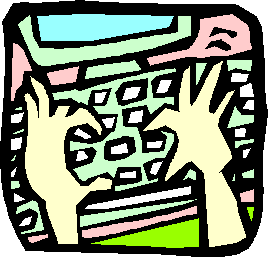
|
-
Tools
for Writing:
- Word
Processing
-
-
- Over 95% of computer time is spent
with word processing and email.
-
- We often forget the importance of
teaching process writing when using a word
processor. The power of the word processor
is flexibility. Too often students only
have time to "type" their
report.
- Prewriting
- Composing
- Revising
- Editing
- Publishing
- Explore topics for word
processing projects.
|
- Word Processing
Activities
-
- Open any word processor and try the following
activities:
-
- Activity One: Timelines
- Play chronology. Write the
name of an event in history.
The next person adds another event under the
first event. Go back and
reorder the events in the correct
order. Add information to
particular events such as a description or date.
-
- Activity Two: Inspiration
- Download a demo copy of Inspiration.
Explore their examples of visualizing projects.
-
- Activity Three: Commenting
- Explore the remarks or comments function of your
word processor. Brainstorm
other ways to mark student work such as colors for
each contributor.
-
- Activity Four: Authentic Documents, Audio,
and Visuals
- Go to the American
Memories, Science
Clipart, or Yahooligans
Downloader site. Go to Documenting
the American South, Great
Speeches, or Douglass:
Great Speeches site. Choose a visual, document, or
audio to serve as the focal point for a
project. Copy and paste the
visual, document, or audio into your word processing
file. React to the
picture.
-
- Activity Five: Extend
- Write a short paragraph. Go to the Research-It
site. Use the dictionaries and other references to
expand your writing.
-
- Activity Six: Reach Out
- Use the Ask-An-Expert
site or AskA+Locator
site to locate an expert that could answer a question
for your class. Write an email message that contains
the following elements:
- Your school, name, and grade level
- Your interest in the topic
- Your question
- A thank you statement
-
- Back to the
Secondary Project Page
-
Developed by Annette
Lamb, 7/99. Updated
10/99.
|